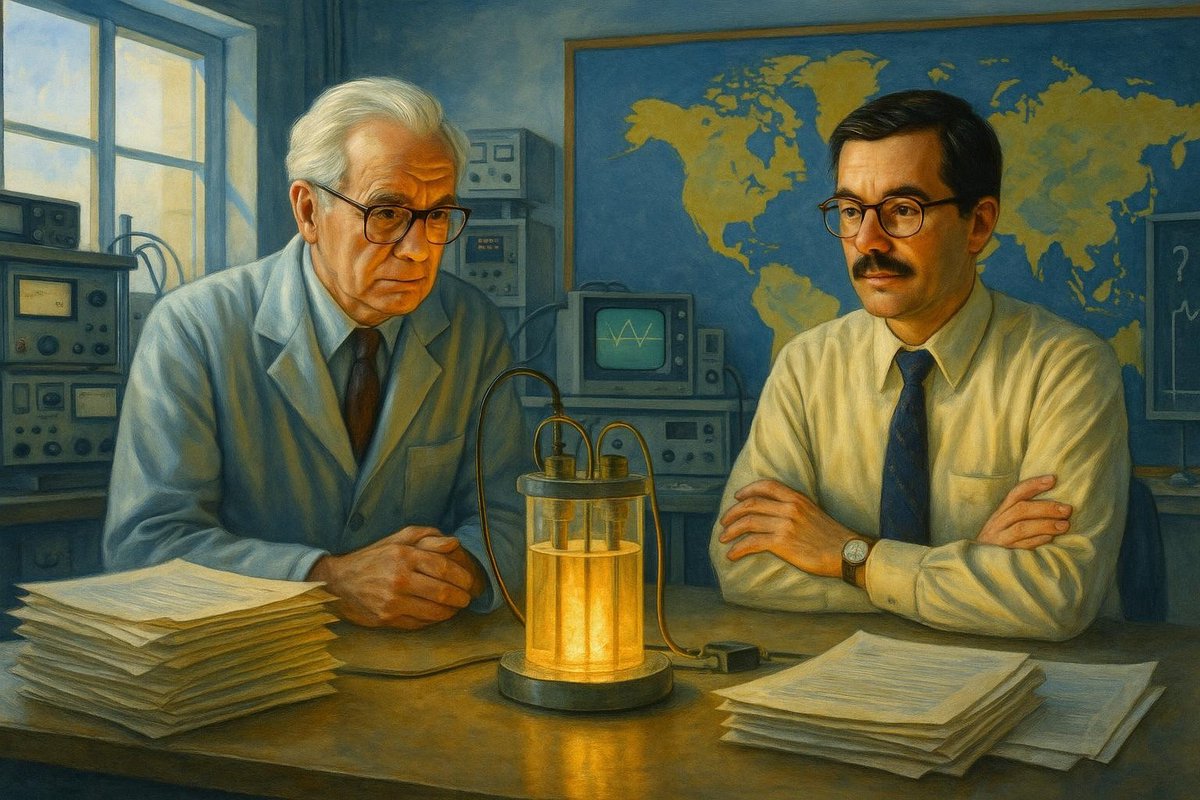
The Initial Problem: Harnessing Unlimited Energy
Imagine a world where energy is as abundant as air. In 1989, the world was captivated by such a promise when two electrochemists, Martin Fleischmann and Stanley Pons, announced they had achieved Cold Fusion at room temperature. This breakthrough promised an almost endless source of clean energy, much like the sun does with its nuclear fusion. But what exactly was Cold Fusion, and why did it capture the imagination of so many?
Before delving into the claims of Cold Fusion, it’s essential to understand the allure of fusion energy itself. Unlike traditional nuclear energy, which relies on fission, fusion combines atomic nuclei to release energy, with minimal radioactive waste.
- Fusion energy is often seen as the ‘holy grail’ of energy sources.
- It promises to provide clean, sustainable, and virtually limitless power.
- The challenge lies in creating and sustaining the conditions for fusion.
Interestingly, the timing of Fleischmann and Pons’ announcement coincided with a global energy crisis, pushing Cold Fusion into the spotlight as the world desperately sought alternative energy solutions.
The Theoretical Breakthrough: Unveiling Cold Fusion
Fleischmann and Pons believed they had unlocked the secret to Cold Fusion, conducting experiments in a simple laboratory setup. This setup involved using a palladium electrode in heavy water, purportedly generating excess heat inexplicable by traditional means. But, how convincing was this theoretical breakthrough?
Many people believe that genuine scientific breakthroughs demand rigorous peer review and replication. In the case of Cold Fusion, replication emerged as a significant hurdle, leading to skepticism within the scientific community.
- Cold Fusion’s allure was its simplicity and accessibility.
- Its claims were tantalizing enough to excite both scientists and investors.
- However, the lack of reproducibility raised questions about its validity.
Of course, skepticism is a vital part of scientific progress. Theories must withstand rigorous scrutiny, and Cold Fusion struggled to do so. The initial excitement faded as time went on, but the story was far from over.
Supporting Evidence and Counter Arguments
The Cold Fusion saga had its share of supporters and detractors. While some scientists claimed to observe similar effects, others attributed the phenomenon to measurement errors or wishful thinking. How did this divide impact the scientific community?
Interestingly, the fervor surrounding Cold Fusion extended beyond the laboratory. It became a battleground for different scientific ideologies and institutions, with political interests playing a significant role in the narrative.
- Cold Fusion attracted attention from governments and the media.
- The potential for economic and geopolitical shifts fueled the debate.
- Scientific conferences witnessed heated discussions and debates.
No wonder the story of Cold Fusion remains a cautionary tale about the intersection of science and politics. The line between discovery and delusion is narrow, and Cold Fusion walked that tightrope.
Modern Relevance and Lessons Learned
As time marches on, Cold Fusion remains a topic of curiosity and debate. While mainstream science has largely dismissed it, some researchers continue to explore its potential. What lessons can we glean from this saga?
For one, Cold Fusion teaches us about the power of hope and the dangers of jumping to conclusions without sufficient evidence. It also highlights the influence of political and economic interests in shaping scientific discourse.
- Cold Fusion reminds us to maintain a healthy skepticism in science.
- The search for clean energy continues, with fusion still a promising candidate.
- Innovation requires both creativity and critical evaluation.
The Cold Fusion saga underscores the importance of rigorous scientific inquiry while reminding us of the delicate interplay between science, society, and politics.
In conclusion, the Cold Fusion story is not just about scientific curiosity but also about human aspiration and error. It serves as a reminder that while the quest for knowledge is noble, it must always be tempered with humility and caution.
Fuel Someone Else’s Curiosity
If this exploration of Cold Fusion has sparked your interest, why not share it with a friend? Opening a dialogue can lead to fascinating discoveries and broaden perspectives. Let’s keep questioning and learning together.

Leave a Reply